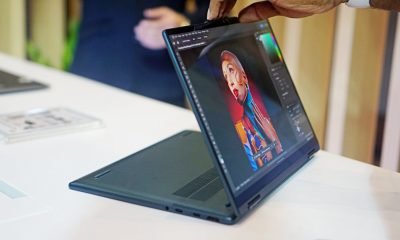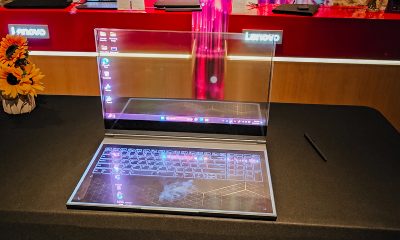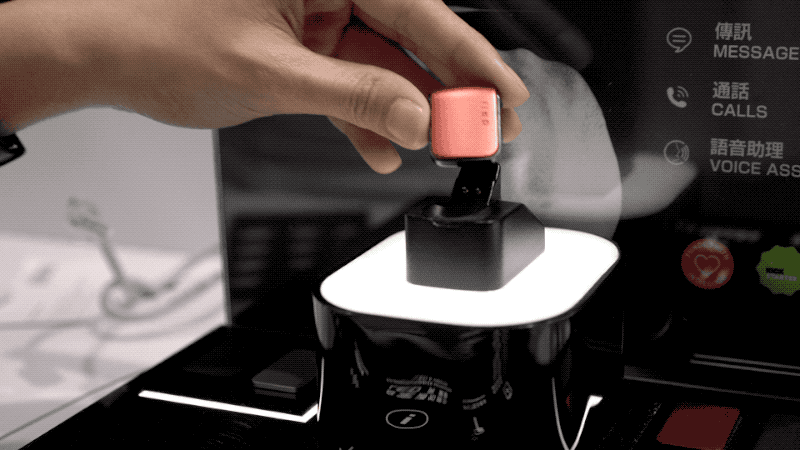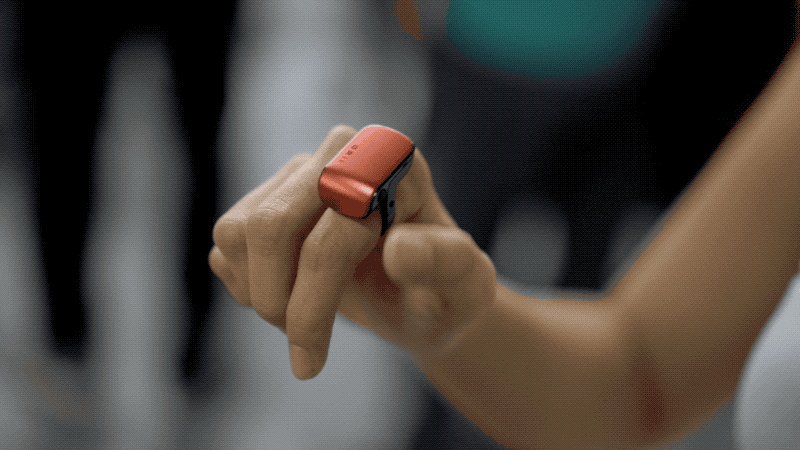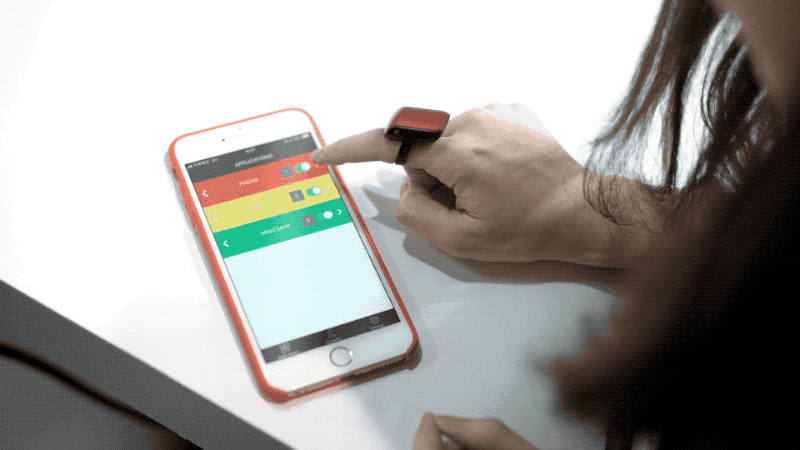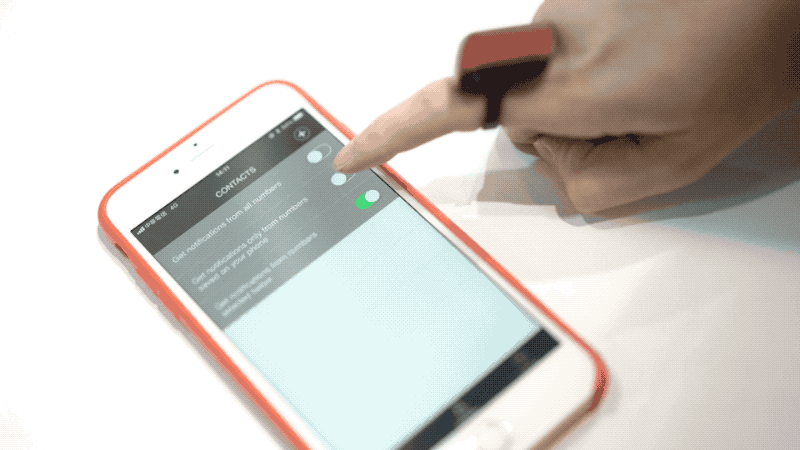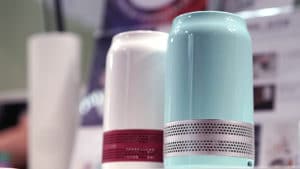Computex 2018
Lenovo’s next Yoga Book will come with dual screens
A successor to the polarizing Yoga Book from 2016
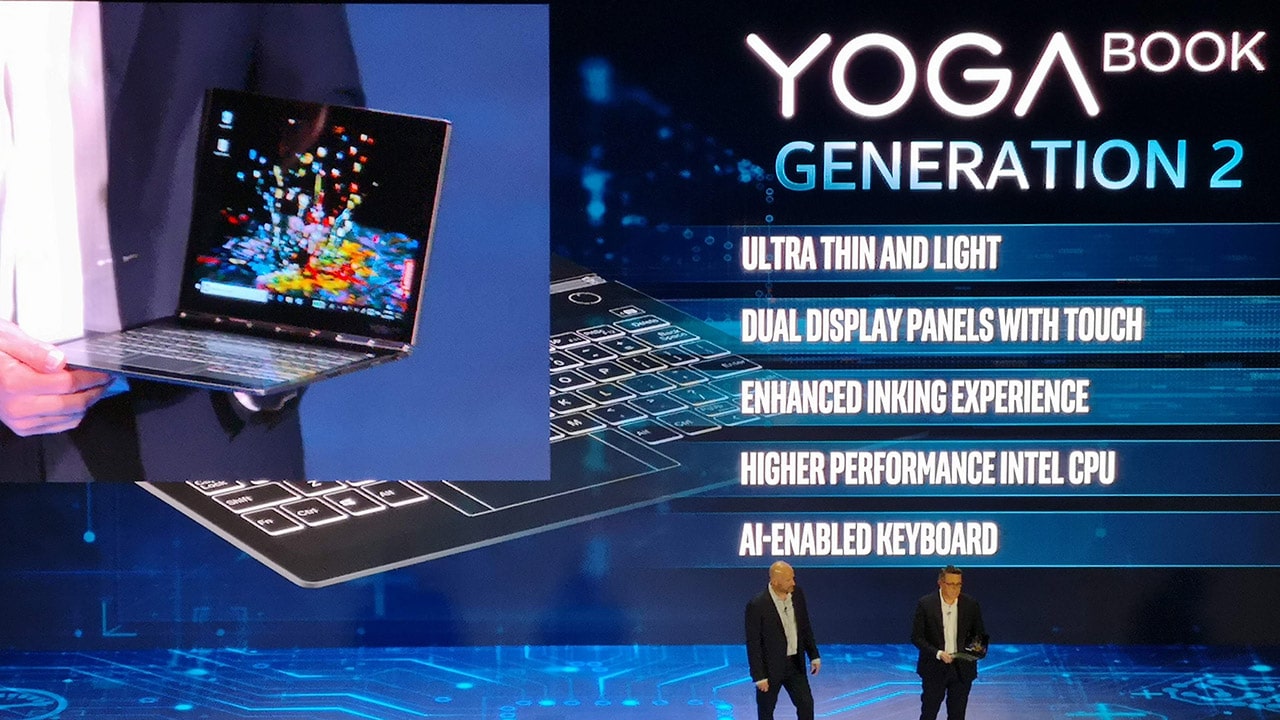
ASUS wasn’t the only one with a dual-screen laptop announcement during Computex 2018. Lenovo also teased its upcoming twin-display notebook, but did so discreetly during an Intel keynote.
Shortly after the announcement of Intel’s limited edition processor, Lenovo surprised the audience (and yours truly) by revealing the Yoga Book Generation 2. This is a successor to the original Yoga Book from 2016 which had a unique touch panel in place of a physical keyboard.
Not much was disclosed by Lenovo during the keynote, but the representative promised that it’ll launch later this year. And since it’s smaller and presumably less powerful than Project Precog, we can assume that this Yoga Book will be more affordable, too.
What crossed everyone’s mind, however, was how intuitive the touch keyboard will be. The first Yoga Book experienced mixed reviews with some praising the innovative input method, while others found it way too difficult to type with. Although we’ve become accustomed to touch typing on smartphones, the design doesn’t automatically translate to a user-friendly one on laptops.
Lenovo’s solution for this, according to the slide seen above, is to integrate artificial intelligence. This probably means predictive input from the computer side, as well as better haptic feedback so you know you’re pressing the right keys.
Could this be the direction all laptops are headed? Possibly so, but we’d like everyone to take this news with a grain of salt. After what happened to the disappointing Lenovo Z5 buildup, we wouldn’t get too excited just yet.


Last year at Computex, I stumbled upon a cool smart ring and wrote about it. It was also my first year covering Computex and I had honestly never heard of bone actuator tech, hence the discovery of said smart ring that allowed me to make calls with my finger blew my mind.
This was the ORII ring, and a year later, I find them again at Computex and they have even more to offer.
When I first interviewed Emile and Kevin, founders of ORII’s Origami Labs, I only saw prototypes and one functioning ring for audio demos. These days, the rings are fully functional and are shipping to initial Kickstarter backers. More functionalities are added on, with even more features to come in the future.
What’s new with ORII?
For starters, the ORII ring is even smaller and more polished. It’s now at a size that I would actually wear for the tech.
And, as promised, it comes in more colors: There’s a red one that goes well with my hair, in addition to black, silver, and gray ones. This is a big deal to me because last year, there were only black and gray rings, and now color is finally here!
The ring comes with different ring sizes, too, so it fits every finger. It’s also splash-proof with an IPX7 rating so everyday wear is a possibility.
It comes with a charging dock, but it seems that the ring won’t be on it a whole lot as it has a whopping two days of battery standby time and two whole hours of talk time. That’s a lot considering you’ll only ever be using it for short commands and calls don’t usually last that long (we hope!).
So, how does it work?
With the ORII ring, you need only your finger to be able to hear things from your phone. The ring has a built-in mic so you can actually make calls — like a real spy.
Smart assistants are also compatible with the ORII. Using just the ring, you can send messages and issue smart commands to Google Assistant, Siri, or Alexa, without even having to look at your phone.
It has gesture commands and there’s also a button on the side of the ring that you can program depending on what you want it to do. For example, just raising your finger to your ear can activate the mic, or pressing the button can trigger your smart assistant.
At the bottom of the ring is a small LED light that’s a discreet way to give you notifications. Designed so only you can see the quick prompt, the lights are also fully customizable.
Meaning, you can change the colors depending on what app is alerting…
… or even choose which people messaging get special alerts.
Think of all the things you can do with this thing! Everything will literally be at the tip of your fingers.
Admittedly, I got sentimental when I tested out the ORII again. I personally saw the growth of this tech firsthand and it’s great to actually try out technology that only a year ago, Emile and Kevin were just describing to me. They’ve come a long way from last year and yet again I am impressed with their progress.
What I love about the ORII is how different it is to what we already have in the market. It’s great to see tech that breaks out from the usual mold of what current wearables are and what they do.
I’d totally rock this ring, and it’s not just because it matches my hair.
Computex 2018
Bloo Vision is a non-invasive way to help your child’s lazy eye
As easy as playing a game!

What if I told you that you could help cure your child’s lazy eye by having him play games? One startup aims to cure vision impairment in children, one tablet at a time.
Bloo offers a non-invasive solution to the lazy eye through tech. It’s simple: Their devices use binocular training and gameplay to make sure that kids have fun in the process.
Just how does this all work? It starts with eyewear and a tablet, plus a game to play on said tablet.
These unassuming shades are custom-made. At first wear, they seem like normal glasses, but a quick look at the seemingly blank tablet will show you that they aren’t.
Playing games on this tablet with glasses custom-fitted to your child’s condition trains the eyes. By making sure that both eyes are utilized, your child’s eyes will be trained to fully function. This is similar to already-existing binocular training already being done, except there are no cumbersome eye patches, there are fun games to play, and you get to do it at your own time.
You can check out Bloo here.

Literally breathe easy with this portable device, and never have to deal with allergens and foul smells again.
This is the Luft Qi air purifier from startup company Titus&Wayne. Announced first on Indiegogo, the purifiers debuted at InnoVex during Computex 2018. I got to check them out at the event.
These tiny things, the size of a soda can, can filter the air to get rid of germs, toxic chemicals, bacteria, viruses, and even bad odors.
They’re lightweight and come in different colors — there’s even a limited edition handmade wood version available to Indiegogo backers that look especially classy. Because of their compact shape and size, they’re also ideal for those who travel. It’s particularly useful to those who are extra sensitive when it comes to allergens since you can bring it anywhere you go with ease.
Just one plug into a micro-USB power source and you’re all set; the purifier covers the surrounding 16 square meters. It’s pretty quiet, too. You won’t even know it’s running.
These things do not use filters. Nanotechnology is instead used to break down whatever impurities are in the air. This means that more than 80 percent of bacteria and mold are destroyed with this device on in just 30 minutes (according to independent studies). This also means you’ll never have to clean it out.
Here’s a quick and simple illustration of how it works:
Think about it: In your own room, in your car, or even in a hotel room, you get the luxury of clean air all the time.
The Luft Qi ships this July, you can back their campaign on Indiegogo here.
-

 Accessories2 weeks ago
Accessories2 weeks agoApple Vision Pro Review: Two Months Later
-

 Features5 days ago
Features5 days agoFortify your home office or business setup with these devices
-

 Gaming1 week ago
Gaming1 week agoThe Rogue Prince of Persia looks like an ultra-colorful roguelite
-

 Events1 week ago
Events1 week agoStellar Blade: PlayStation taps cosplayers to play Eve for game’s launch
-

 Accessories1 week ago
Accessories1 week agoLogitech unveils G Pro X 60 gaming keyboard: Price, details
-

 Gaming1 week ago
Gaming1 week agoStar Wars Outlaws release date revealed
-

 Philippines2 weeks ago
Philippines2 weeks agovivo Y100 to release in Philippines on April 27
-

 Deals2 weeks ago
Deals2 weeks agoSamsung Awesome April: Deals on Galaxy A series



